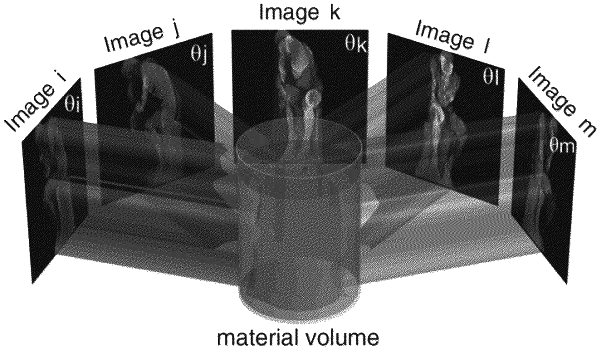| CPC G05B 19/4099 (2013.01) [G06T 7/0004 (2013.01); G05B 2219/49023 (2013.01); G06T 2207/30108 (2013.01)] | 66 Claims |

|
1. A method performed by one or more computing systems for determining a light intensity field for use in manufacturing a 3D object from a volume of material, the material being photoreactive and having a dose curing threshold indicating energy dose that results in curing material, the method comprising:
receiving a 3D specification of a 3D geometry for the 3D object, the 3D specification specifying voxels within the volume of material that are to be part of the 3D object;
accessing a specification of a cost function for generating a measure of effectiveness of a light intensity field in manufacturing the 3D object, the cost function being based on a sigmoid function and an adjoint of an Attenuated Radon Transform (ART) that models an energy dose that each voxel would receive in manufacturing the 3D object based on the light intensity field;
determining a light intensity field for use in manufacturing the 3D object by applying an optimization technique that employs the cost function to generate a measure of effectiveness of possible light intensity fields and that identifies based on the measures of effectiveness a light intensity field for use in in manufacturing 3D object;
outputting an indication of the light intensity field; and
controlling a device to project images of the light intensity field onto the volume of material.
|